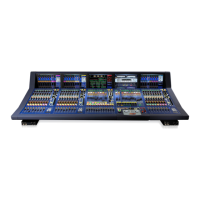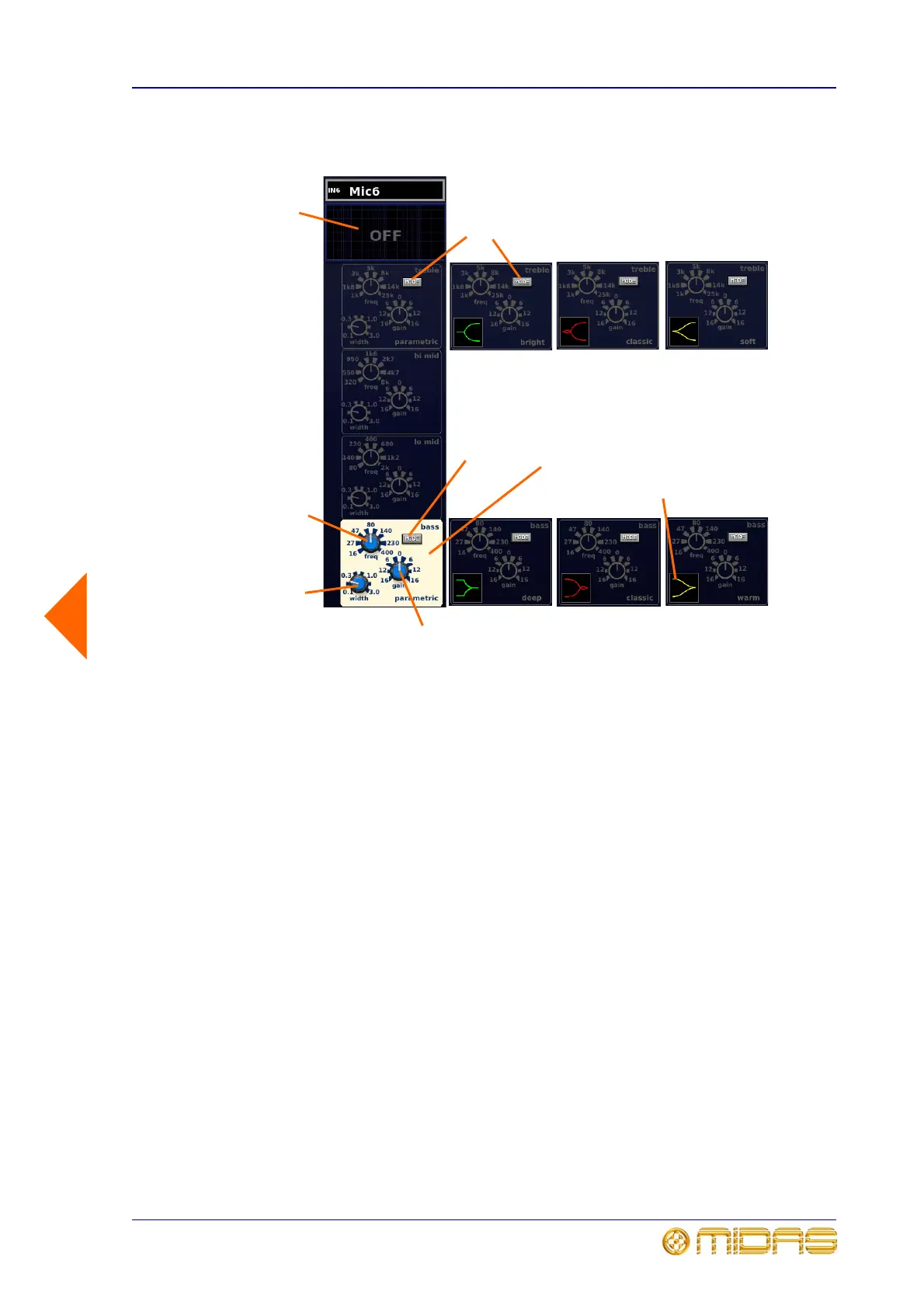EQ (E zone) 57
XL8 Control Surface
Operator Manual
bright mode classic mode soft mode
deep mode classic mode warm mode
10
11
22
12
13
15
14
16 17 18
19 20 21
1 EQ switch puts EQ in/out of operation. An
integral LED illuminates to show switch is enabled.
2 Each EQ band select switch has a red status
indicator for EQ to show which sections are
contributing to the EQ’d sound.
3 Four quick access buttons - treble, hi-mid, lo-
mid and bass - activate GUI support in its input
channel strip for their respective EQ section within the
input fast strip.
4 hi-mid and lo-mid LED indicators illuminate to
show whether hi-mid or lo-mid is selected.
5 Band selection buttons scroll through the treble,
hi-mid, lo-mid and bass options. Buttons illuminate to
show they have selected their respective band, while
hi-mid and lo-mid LEDs (see item 4) illuminate
when selected.
6 gain control knob adjusts signal gain.
7 width control knob adjusts the signal bandwidth.
8 freq control knob adjusts signal frequency.
9 SHAPE switch: use this to select signal shape.
10 Graph showing the envelope for each of the four
EQ bands. A different colour represents each
envelope: treble = blue; hi mid = green; lo mid =
yellow; and bass = red. “OFF” is displayed to show
that EQ is off.
11 MODE button - shape selector on treble and bass
peaking displays only.
12 Highlighted section shows band is currently
selected to GUI input channel strip.
13 gain control knob adjusts the gain. Range is
±16. (Moves envelope up and down, inverting as it
passes the origin.)
14 width control knob adjusts the bandwidth.
Range is 0.1 to 3.0. (Widens the base of the
envelope.)
15 freq control knob adjusts the frequency. Range
is 80Hz to 2kHz. (Moves envelope left or right.)
16 Treble bright mode: best on single source
material, see “Bright treble” on page 277.
17 Treble classic mode: best all round EQ, see
“Classic treble” on page 276.
18 Treble soft mode: best for gentle shaping of
pre-mixed material, see “Soft treble” on page 276.
19 Bass deep mode: best on single source material,
see “Deep bass” on page 277.
20 Bass classic mode: best all round EQ, see
“Classic bass” on page 277.
21 Bass warm mode: best for general shaping of
pre-mixed material, see “Warm bass” on page 277.
22 Indicates shape of the signal’s envelope.
11

